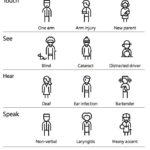Reading Time: < 1 min Website accessibility is something I’ve shared a lot about. We’ve written about it on the GreenMellen blog, devoted a podcast episode to it, and there are a handful of posts on here as well. Polishing up the accessibility of your website is a great thing, and makes it so all users can consume the content […]
Accessibility
Does accessibility help your website rank higher?
Reading Time: < 1 min Online accessibility has become an important topic over the past few years. I’ve shared some tips on how you can improve accessibility on your site, and this short podcast offers a few more bits of advice. The question is — does Google reward your site for being accessible? The short answer is “no”, but the […]
Going beyond accessibility to reduce motion
Reading Time: 2 min Building websites that are accessible to all users is something that continues to be a problem on much of the web, but it’s continuing to improve over time. For most sites, some simple steps will get you going in the right direction and put you ahead of most other sites in helping users with disabilities […]
Spot the imposter
Reading Time: 2 min When dealing with a professional of any kind, you expect that they know the lingo. For example, I’m not very knowledgeable about how a car works, but if I’m talking to a mechanic and I mention that I think I might have an issue with my transmission, and he responds with “what’s a transmission?”, I […]
Don’t break the back button
Reading Time: < 1 min Over the years, the “back” button on web browsers has consistently been shown to be one of the most-used features on a web browser. As time as gone on, though, websites have found increasingly creative ways to break that core functionality. The folks at the Baymard Institute have showed four design patterns that violate what […]
They’re never called “alt tags”
Reading Time: 2 min When working to make your website more accessible, one area to work on is adding alternative attributes to images. This text is what vision-impaired users will hear as a representation of the image (and it’s useful to Google as well), so it’s worth doing right. Using WordPress, for example, you can simply click an image […]
Website Accessibility: Help your users, help your rankings
Reading Time: < 1 min Yesterday at the A Brighter Web Meetup, we had a great discussion about website accessibility, why it’s important, and steps to take to get started. You can download the slides as a PDF, or view them all here: Website Accessibility: Help your users, help your rankings from Mickey Mellen You can also check out this […]
Some things are worse in order to get better
Reading Time: < 1 min Some things come along that just don’t make sense at first. A good example is the digital camera — the first ones took nearly unrecognizable pictures, and even early consumer models took very poor quality pictures compared to traditional cameras. You could look at it one of two ways: My normal camera is way better […]
An hour without a mouse
Reading Time: 2 min I’ve seen people try to use the web with just a keyboard for a full day, or even a week, but I thought a good place to start would just be a single hour. It doesn’t sound too tough at first, but you quickly realize — how do I switch tabs with my keyboard? Or […]
PDFs are starting to go away
Reading Time: < 1 min The UK has updated their content design guidelines in major way, and I suspect similar guidelines will find their way to the US before too long. Specifically, they now say: If you publish a PDF or other non-HTML document without an accessible version, you may be breaking the law. The reason for this is pretty […]









